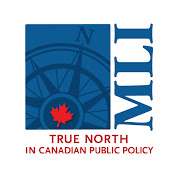Local environmental officials hope a new funding program will entice London-area farmers to do more to reduce the algal bloom-causing phosphorus that leaves their farmland.
An essential element, and a vital nutrient for crop and plant growth, excessive phosphorus in waterways can help fuel the toxic algal blooms that have plagued Lake Erie for decades.
A significant amount of the phosphorus entering Lake Erie comes from agricultural runoff, according to the federal government, however it can also be found in soaps, detergents and human waste.
With that in mind, the Upper Thames River Conservation Authority (UTRCA) has unveiled the Thames River Phosphorus Reduction Program, backed by $17.4 million in funding from the federal government. It’s one of 50 programs receiving funds from a larger $76 million pool aimed at improving the Great Lakes.
UTRCA is looking to incentivize farmers and landowners to implement practices to curb phosphorus losses, including soil testing, crop covering, erosion control, subsurface …





![New grants incentivize London-area farmers to fight Lake Erie algal blooms [Video]](https://canadanewsvideo.com/wp-content/uploads/2024/11/mp_672144_0_toledowaterproblemsjpg.jpg)




![Jewish leaders hope charges coming after police raid pro-Palestine activists Vancouver home [Video]](https://canadanewsvideo.com/wp-content/uploads/2024/11/mp_672358_0_homeraided171126571731727786729png.png)
![Security footage of robbery shared by Winnipeg pawn shop owner [Video]](https://canadanewsvideo.com/wp-content/uploads/2024/11/mp_672096_0_pawnshoprobbery171124241731715105088jpeg.jpg)
![Police raid Vancouver home of pro-Palestinian activist facing hate crime probe [Video]](https://canadanewsvideo.com/wp-content/uploads/2024/11/mp_671397_0_charlottekatesERTpng.png)
![Ottawa police lay more than 140 charges in major organized crime probe [Video]](https://canadanewsvideo.com/wp-content/uploads/2024/11/mp_671070_0_2024110814115620241108141152c4cbbb40137fcf3a56757bb801c1a822fb26b1522a3e9816f82f42985cf94176jpg.jpg)
